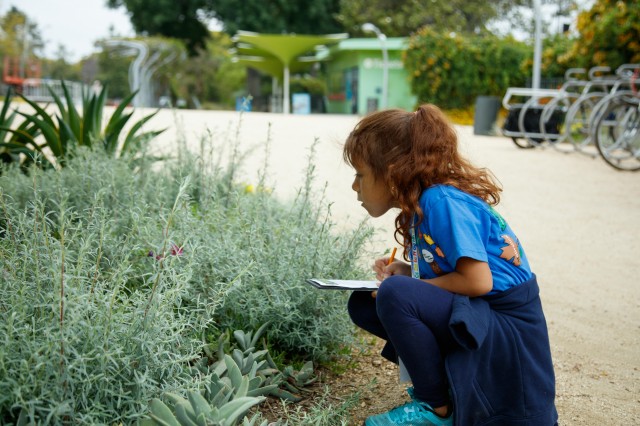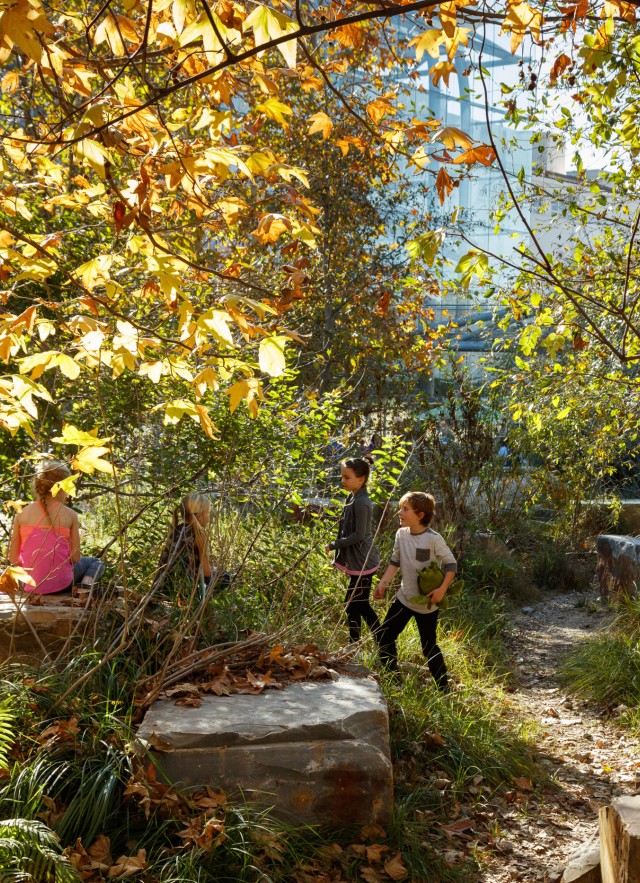
Lesson Plan | All Grades
You might be surprised to learn that you can take a nature walk anywhere!

You might be surprised to learn that you can take a nature walk anywhere - and by anywhere, we mean anywhere! Whether you're on a tree-covered mountaintop or surrounded by concrete in the middle of a city, there is beautiful and interesting nature to be found. Here are some suggestions for how to find it:
1. Slow down
Feeling comfortable in the outdoors is important for the success of your nature walk. Take a moment to breathe a little deeper and move a little slower. Pause and think about what you see, hear, smell and feel.
2. Put on your "nature eyes"
When you go out on your nature walk, you may be walking in a place that is very familiar to you. Maybe nothing has changed since you last walked there, except you. When you put on your "nature eyes," you are deciding to look in a new way at your surroundings. By using all of your senses, and purposefully looking for nature, you will notice things that you've never seen before.
3. Think about habitat
Habitat is the natural home or environment of an animal, plant, or other organism. Organisms need an environment that provides these four things: food, water, space, and shelter. A flower might provide food, a pond or faucet might provide water, a rock might provide shelter. Look to see if you can find any of these four elements of habitat.
4. Look up, down, and under
We are used to looking at the world from our familiar perspectives, but what happens when you try to see things from different angles? Are there birds overhead? Leaves on the ground? Any leaves, rocks, or benches that you can look under? Looking high and looking low will help you see more wildlife.
5. Meet people where they are
Many people are not comfortable with wildlife, or with getting dirty. If you are guiding others on a nature walk, remember to respect their personal and cultural practices and try to find ways to engage them at their comfort level. Reassure them when they are trying something new. A nature walk should be fun, and respecting people’s comfort levels will help them gain more confidence and be willing to explore more over time.
6. Remember safety
Your safety and the safety of the wildlife around you should be your priority. Many insects fly straight up to avoid predators, so don't position yourself directly above bees, wasps, and other flying insects. If you are lifting up a rock or board to look for animals underneath, lift it up from the far side and look over the top. That way, if an animal runs, swims, or slithers out, it will be moving away from you instead of toward you. After observing the nature, put the rock or board back exactly as you found it so that you will protect the animal's habitat.